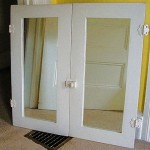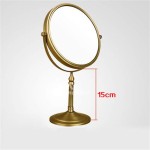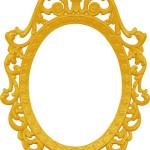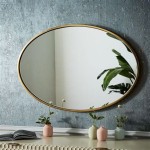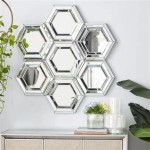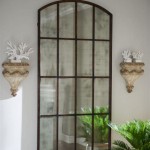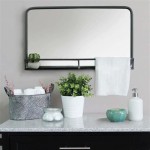Mirror and Picture Wall Decor
Wall décor significantly impacts a room's aesthetic and ambiance. Mirrors and pictures are versatile elements offering both functional and decorative benefits. Strategic placement and thoughtful combinations can transform a space, creating a personalized and visually appealing environment. This article explores the various aspects of incorporating mirrors and pictures into wall décor.
Choosing the Right Pieces
Selecting appropriate mirrors and pictures is crucial for achieving the desired aesthetic. Consider the existing décor style, room size, and available wall space. For instance, a large, ornate mirror can become a focal point in a classic or vintage-inspired room. Conversely, a collection of smaller, framed botanical prints might suit a minimalist or cottage-style setting. The artwork's subject matter, color palette, and frame style should complement the overall design scheme.
When selecting mirrors, consider their shape, size, and frame material. Round or oval mirrors can soften a room's angles, while rectangular or square mirrors offer a more contemporary feel. Frame materials range from wood and metal to plastic and resin, each contributing a unique aesthetic. For pictures, explore different mediums like paintings, prints, photographs, and even textile art. The choice depends on personal preferences and the overall design vision.
Beyond aesthetics, functionality is also important. Mirrors can enhance natural light and create an illusion of spaciousness, especially in smaller rooms. Their placement opposite windows or light sources maximizes light reflection. Pictures, on the other hand, add personality and visual interest, telling stories and reflecting individual tastes.
Creating a Balanced Arrangement
Arranging mirrors and pictures effectively involves careful planning and consideration of visual balance. A common approach is to create a gallery wall, showcasing a curated collection of framed pieces. This arrangement allows for diverse sizes, shapes, and styles, adding a dynamic and personalized touch to the wall. Symmetry and asymmetry are key principles to keep in mind. Symmetrical arrangements create a formal and balanced look, while asymmetrical arrangements offer a more relaxed and eclectic feel. Consider the wall's dimensions and the size of the artwork when deciding on the layout.
Spacing between frames is another crucial factor. Too much space can make the arrangement appear sparse, while too little space can feel cluttered. A general guideline is to maintain consistent spacing of two to four inches between frames. However, this can be adjusted based on the specific artwork and the desired visual effect. Use painter's tape or paper templates to plan the layout before hanging, ensuring a cohesive and visually pleasing arrangement.
Experimenting with different arrangements can help visualize the final outcome. Consider creating a mock-up on the floor or using digital tools to arrange the pieces virtually. This allows adjustments and refinements before committing to the final placement on the wall.
Hanging Techniques and Hardware
Proper hanging techniques are essential for ensuring the safety and stability of the artwork and mirrors. Use appropriate hardware for the wall type and the weight of the pieces. For lighter items, adhesive hooks or small nails might suffice. Heavier items require more robust hardware, like picture hooks, D-rings, and wall anchors. Always check the weight limits of the chosen hardware to prevent accidents.
Accurate measurements and precise placement are crucial for achieving the desired arrangement. Use a level to ensure straight lines and avoid tilting. For gallery walls, a laser level can be particularly helpful in maintaining consistent horizontal and vertical alignment. Mark the wall with pencil before hammering nails or drilling holes to avoid unnecessary damage.
Consider the height of the artwork in relation to the surrounding furniture and architectural features. A general rule of thumb is to hang artwork at eye level, typically around 57 inches from the floor to the center of the piece. However, adjustments can be made based on the specific room and the desired visual flow.
When hanging mirrors, consider the reflection. Position the mirror to reflect appealing views or light sources, avoiding reflections of cluttered areas or undesirable elements. Be mindful of glare, especially in rooms with strong natural light. Experimenting with different angles and placements can optimize the mirror's reflective qualities and enhance the overall ambiance of the room.

13 Mirrors Gallery Walls Ideas To Copy Lolly Jane

3r Studios Medium Round Gold Art Deco Mirror 23 5 In H X W De4799ahc The Home Depot Room Decor Mirrors Living

10 Ideas For Decorating With Mirrors Stance Studies On The Family Living Room Decor Wall
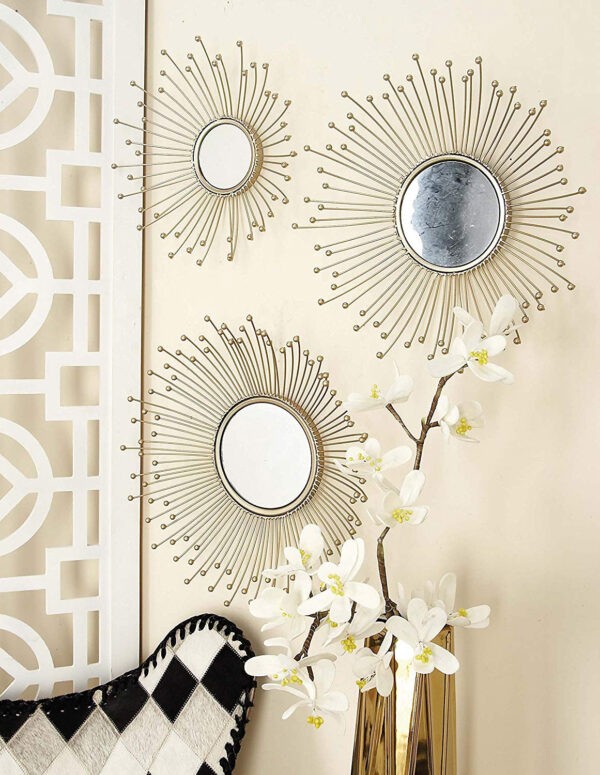
51 Decorative Wall Mirrors To Fill That Empty Space In Your

Wall Mirror Decor Ideas For A Glamorous Interior

Wall Decor Mirrored Acrylic Art Blob Mirror Buy At The Best With Delivery Uniqstiq

Silver Acrylic Hexagon Wall Decor Mirrors Set Of 6 Pyari Walls

Buy Decorative Wall Mirror Large Rectangular Broe Finish Hanging Interior Decor In

Iron And Glass Embellished Edgy Golden Round Mirror Wall Decor For Home Size 29 X 1 Inches At Rs 8999 Piece In Noida

9 Decorative Mirror Designs Wall Art 46 X 23 Inches Hansart

